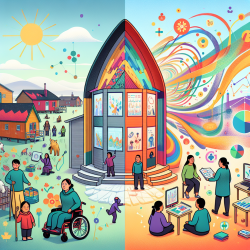Understanding the Role of Socio-Economic Status in Child Development
In the realm of child development, socio-economic status (SES) has long been recognized as a significant factor influencing various outcomes. Recent research titled "Longitudinal Relation between Family Socio-Economic Status and Problem Behaviors in Chinese Children: The Roles of Sense of Coherence and Maternal Warmth" sheds light on the nuanced ways SES affects children's behavior, particularly in the Chinese context.
The Study's Key Findings
The study explored how family SES impacts problem behaviors in children, focusing on internalizing behaviors such as anxiety and depression, and externalizing behaviors like aggression. It highlighted two critical mediators: the child's sense of coherence and perceived maternal warmth.
Key findings include:
- Children's sense of coherence mediated the relationship between family SES and internalizing problem behaviors.
- Maternal warmth moderated this mediation, with higher warmth enhancing the positive effects of SES on a child's sense of coherence.
- Contrary to expectations, SES did not significantly predict externalizing behaviors over time, suggesting a more complex relationship that might be non-linear.
Implications for Practitioners
For practitioners working in special education and child development, these findings offer several actionable insights:
- Focus on Building Sense of Coherence: Encouraging activities that enhance a child's sense of coherence can be beneficial. This includes promoting environments where children feel their experiences are comprehensible, manageable, and meaningful.
- Enhance Maternal Warmth: Programs aimed at increasing maternal warmth can amplify the positive effects of higher SES on children's internalizing behaviors. This can involve parenting workshops that focus on emotional closeness and responsive parenting.
- Consider Cultural Contexts: Understanding the cultural context, such as the emphasis on social harmony in China, is crucial when applying these findings. This cultural sensitivity can inform tailored interventions that resonate with the values and norms of the community.
Encouraging Further Research
The study opens avenues for further exploration, particularly in understanding the non-linear relationship between SES and externalizing behaviors. Future research could focus on multi-wave longitudinal studies to capture these dynamics over time.
Additionally, exploring the roles of other family dynamics and individual traits in different cultural contexts can provide a more comprehensive understanding of the mechanisms at play.
Conclusion
This research underscores the importance of socio-economic factors in child development and highlights the potential of maternal warmth and a strong sense of coherence in mitigating problem behaviors. Practitioners are encouraged to integrate these insights into their work, enhancing the support provided to children and families.
To read the original research paper, please follow this link: Longitudinal Relation between Family Socio-Economic Status and Problem Behaviors in Chinese Children: The Roles of Sense of Coherence and Maternal Warmth.










